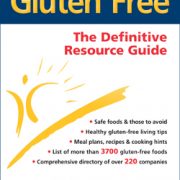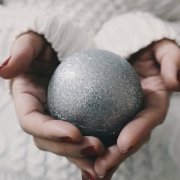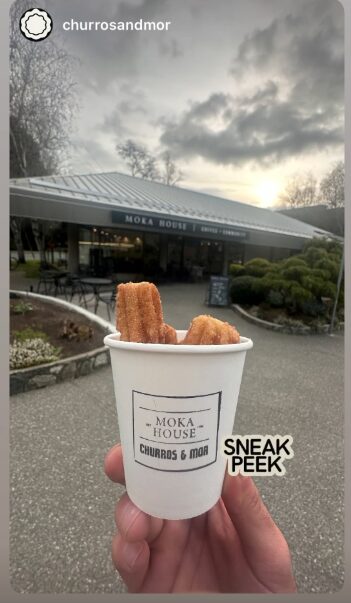What to Do When Your Partner is Diagnosed with Celiac Disease?
 “My life changed when his life changed. I vowed that we’d make this damn thing fun and that I’d help lessen the burden.”
“My life changed when his life changed. I vowed that we’d make this damn thing fun and that I’d help lessen the burden.”
- by Collier Sutter, greatist.com 1
The gluten-free diet craze has officially hit fever pitch. Chances are, you know someone in your life who has hopped on the GF bandwagon, stripping their cupboards of flour, pasta, and other refined carbs for alleged digestive comfort or in hopes of simple weight loss. But behind the mod diet books and list of celebrities pioneering the gluten-free lifestyle for fun (looking at you, Kourtney Kardashian) sits one percent of the population with much more serious concerns. We’re talking about people with celiac disease.
Celiac disease is an autoimmune condition in which any bit of gluten (even a crumb) can cause damage to the lining of the small intestine. When that happens, the body can’t absorb vitamins, minerals, and other nutrients it needs to stay healthy.
The News That Changed Date Nights
I know a thing or two about the disease because my boyfriend, a 26-year-old who used to eat baguettes for lunch, drink a beer with dinner, and hit up a good pastry shop for dessert, was diagnosed with the disease one year ago. That means his body had already taken a whopping 25 years of pasta- and pizza-filled abuse and would now need a rough few years to recover. Though, TBH, I’m not sure if his small intestine will ever be 100 percent.
When we got the news, it utterly sucked. And it wasn’t the sad hole in his croissant-craving soul that would cause him the most disappointment. It was the fact that there’s nothing easy about a lifestyle where you can’t trust the food around you. Gluten. Is. Everywhere. Often hiding as a binding agent, the big G might be lurking in the breakfast sausage you ate this morning, the salad dressing you ate for lunch, and in last night’s meatballs too. On the day he found out, I vowed that we’d make this damn thing fun and that I’d help lessen the burden—which meant a total lifestyle change for me too.
As a food writer, I knew I had to change my mindset first. My willpower not to eat gluten-packed foods wavers at the sight of a sexy bowl of fettuccine Bolognese passing by in a waitress’s hands. But becoming celiac wasn’t a choice for my boyfriend, someone who would do unmentionable things to get a bite of that heavenly pasta too. So I dropped the doughnuts, and we were off to the races to find ways to adjust to the strict new lifestyle.
I Changed My Life When He Changed His
I swapped my makeup and soaps for strictly gluten-free products—or else no kissing him (!!). I always brush my teeth twice (plus mouthwash) if I nibble on anything with traces of gluten before meeting up with him. I double-check labels of everything we even think about buying. I constantly research new gluten-free snacks that were made in a gluten-free facility. I never order a beer around him (though I still love you, IPAs), and I always beat him to the punch when asking waiters what gluten-free options are available—so he doesn’t have to explain his situation for the 100th time.
This one’s huge at family and friend’s homes too. It’s awkward to have to explain to a host upon arrival that you don’t want to touch their damn baked Brie because of all the gluten-filled crackers being dunked into it. Or worse, that you can’t risk eating their prepared main, the chicken pot pie, because the stock may contain gluten traces. I know he probably feels ridiculous and frustrated repeating it again and again. So, that’s where I happily jump into action, explaining (in layman’s terms) to those that don’t yet know the extremes of the diet.
15 Ways I Support My BF on the GF Train
Celiacs have to be on their A-game every second of their lives, but the people around them can help make it feel less like an insane vortex by helping. Here’s a list of things I’ve done to help my boyfriend that aren’t as obvious as not ordering a bagel at brunch.
1. Check gluten-free labels on snacks.
Yes, I know this is obvious, but it’s most important to always follow up with a quick Google of the product to be sure the company states there is no chance for cross-contamination in its facilities.
2. Buy new cutting boards.
… and pots, pans, dish towels, and sink sponges that will remain far, far away from gluten. You can even purchase a basket and label it “GF” to be sure these items never go near a bread crumb.
3. Rearrange the kitchen.
You have to make sure there’s no loose flour falling out of shelves into cooking areas or clean countertops. On that note, it’s probably smart to give away your all-purpose flour and opt for tapioca, almond, coconut, and arrowroot instead.
4. Get an Instant Pot.
As if you needed another reason to love the popular gadget! We swear by the Instant Pot because it’s such an easy way not to risk the gluten-particle woes of the ol’ oven. People aren’t out here scrubbing down their ovens all that frequently, so yeah, the flour from last week’s baked chicken tenders could still be circulating in those convection vents.
5. Be vigilant on date nights.
When you go out to restaurants, be sure your server (and the entire kitchen staff) understands this is medical and not just about carb-cutting. But also avoid restaurants if you’re worried about cross-contamination because that chance is often high.
6. Run from “gluten-free” sweet treats.
Unless the bakery is entirely gluten-free, a GF croissant should be off-limits since cross-contamination is almost inevitable here too.
7. Skip tortilla chips and French fries.
While these foods may not contain any gluten themselves, they were probably fried up in the same fryer as those breaded onion rings or flour tortilla chimichangas.
8. Avoid soy.
I was surprised to find out that soy products aren’t as GF as you’d think. While most soy products are technically gluten-free, tofu often gets breaded, and that soy sauce is definitely off-limits (thank goodness for coconut aminos).
9. Steer clear of fruits that are often coated in soy wax.
It’s best to go for organic produce without the wax. The protective coating could contain gluten.
10. It’s OK to overthink things.
Check the nitty-gritty details on all hefty ingredient lists. Anything from sausages (which can be held together by gluten) to bottled dressings, cooking stocks, hot chocolate mix, and chocolate can be risky.
11. Embrace a gluten-free diet.
If your loved one has to be gluten-free, it’s in their best interest if you are too—at least while you’re around them.
12. Become kings and queens of meal prep.
Bringing a container filled with gluten-free food when you’re out and about is a must. You never know when you’re going to be too far from a kitchen that can prepare a 100-percent GF dish.
13. Help ward off weird ridicule.
The masses may assume they’re just another self-diagnosed gluten-avoider. Be there with the facts to back them up.
14. Fight off flying flour.
Maybe I’m getting too crazy here, but I don’t even like to step foot in a pizza shop or bakery with super-tight quarters. I’m worried he’ll ingest airborne flour in a pizzeria, and even that can cause problems.
15. Stock up on delicious food they can eat.
Anyone with celiac shouldn’t feel deprived. Buy corn tortillas for epic breakfast tacos, use tapioca flour when baking, and always have arrowroot on hand to thicken up soups and stews.
The Takeaway
As his partner, I think it’s important to help others be less ignorant about the illness. No, celiac disease is not fatal in the way we normally think of severe allergies, like a peanut allergy. I’d never, ever compare the two. But celiac disease, if ignored, can result in a life of major gastrointestinal symptoms and a way higher risk for both non-Hodgkin lymphoma and cancer of the small intestine. Also, if left untreated (which you won’t do now, right?!), other possible side effects that can (very quietly) linger are depression, anxiety, and daily fatigue.
But, just like anything out there, after following the diet, habits will form, and the not-so-easy lifestyle will become second nature. Plus, you can take a minute to thank all the “for fun” gluten-skippers because the demand for GF products is now so high that grocery stores have aisles of options—some of which you’ll find, with a little taste-testing (and confirming they are made in a gluten-free facility), are just as good as the real thing.
1 https://greatist.com/eat/what-its-like-dating-someone-with-celiac-disease













